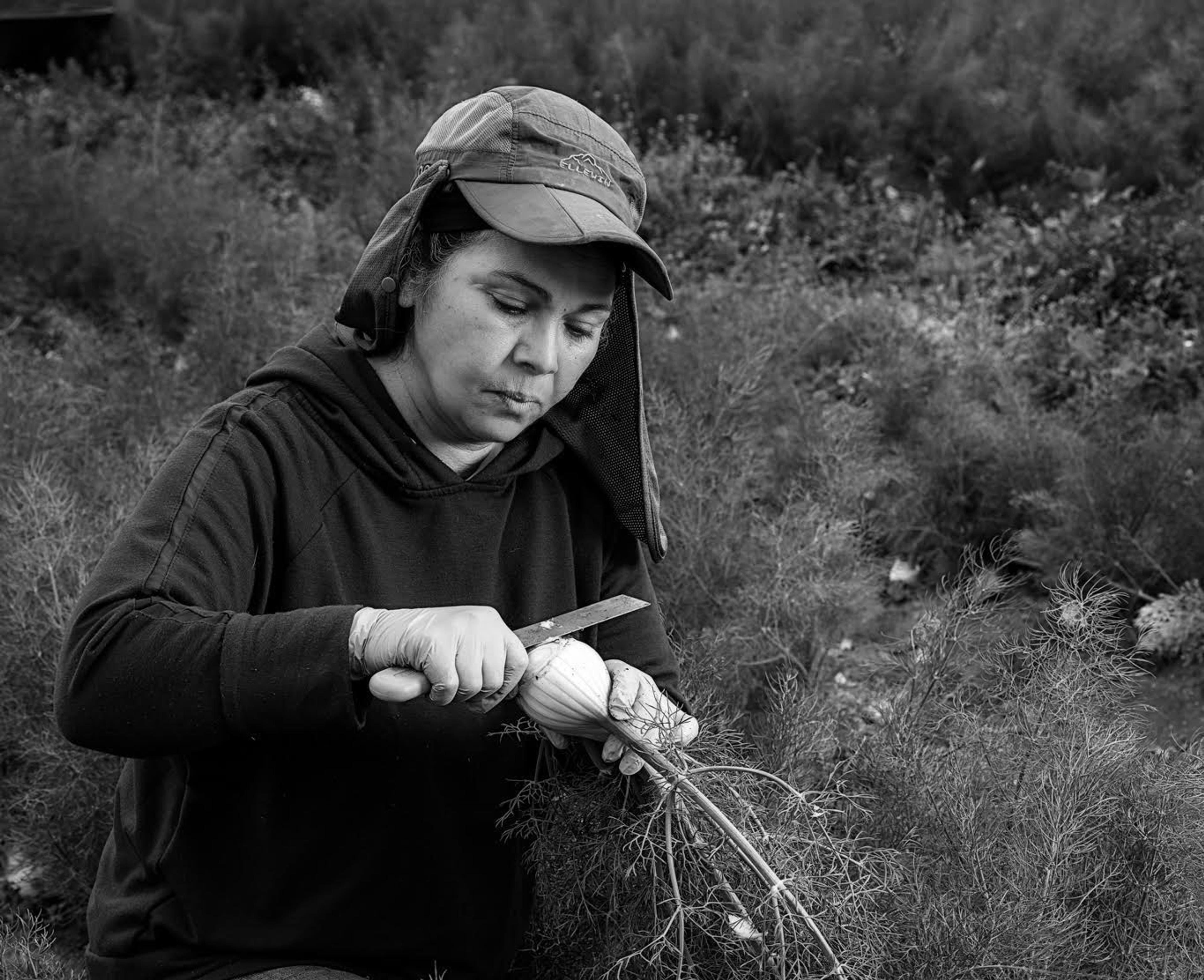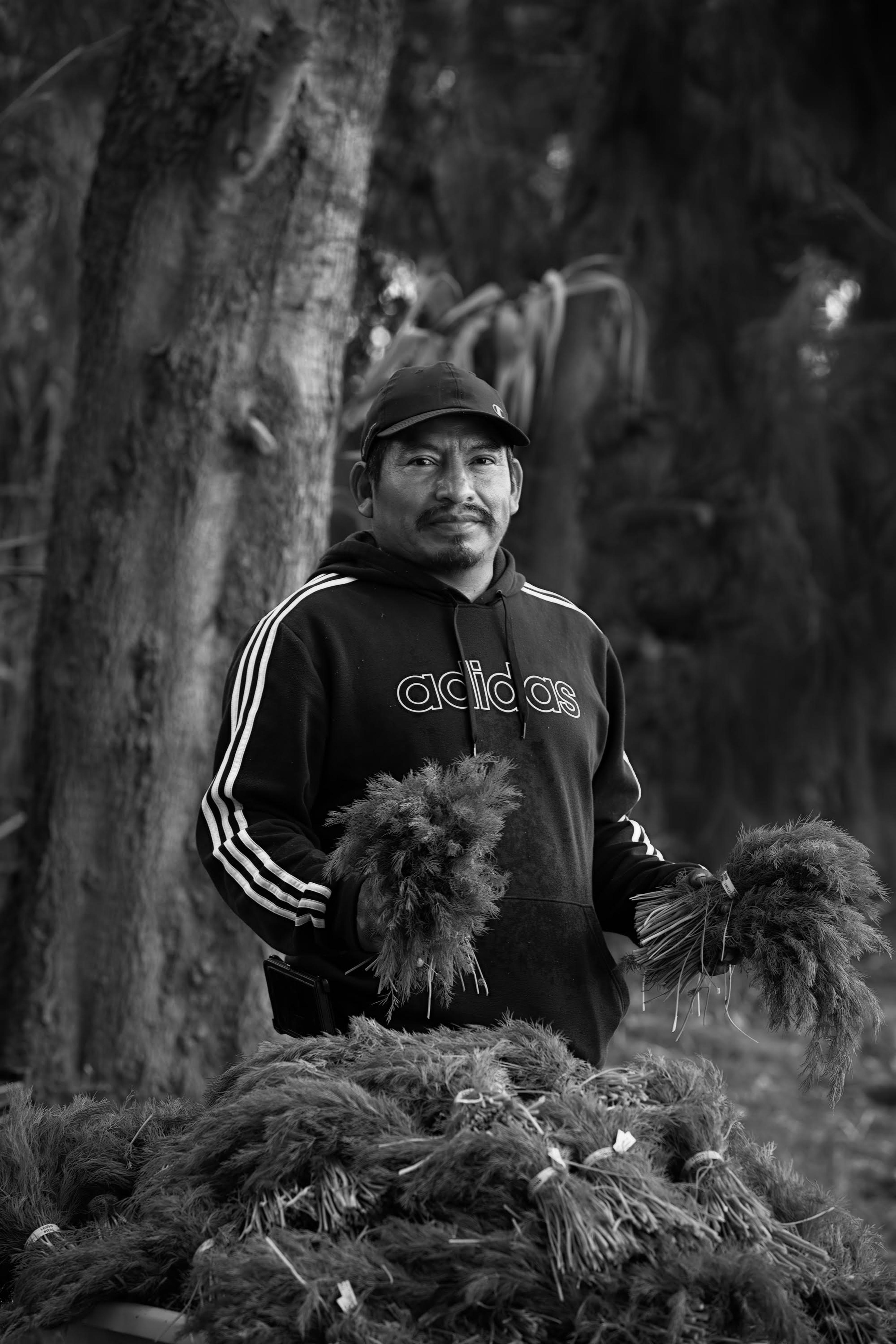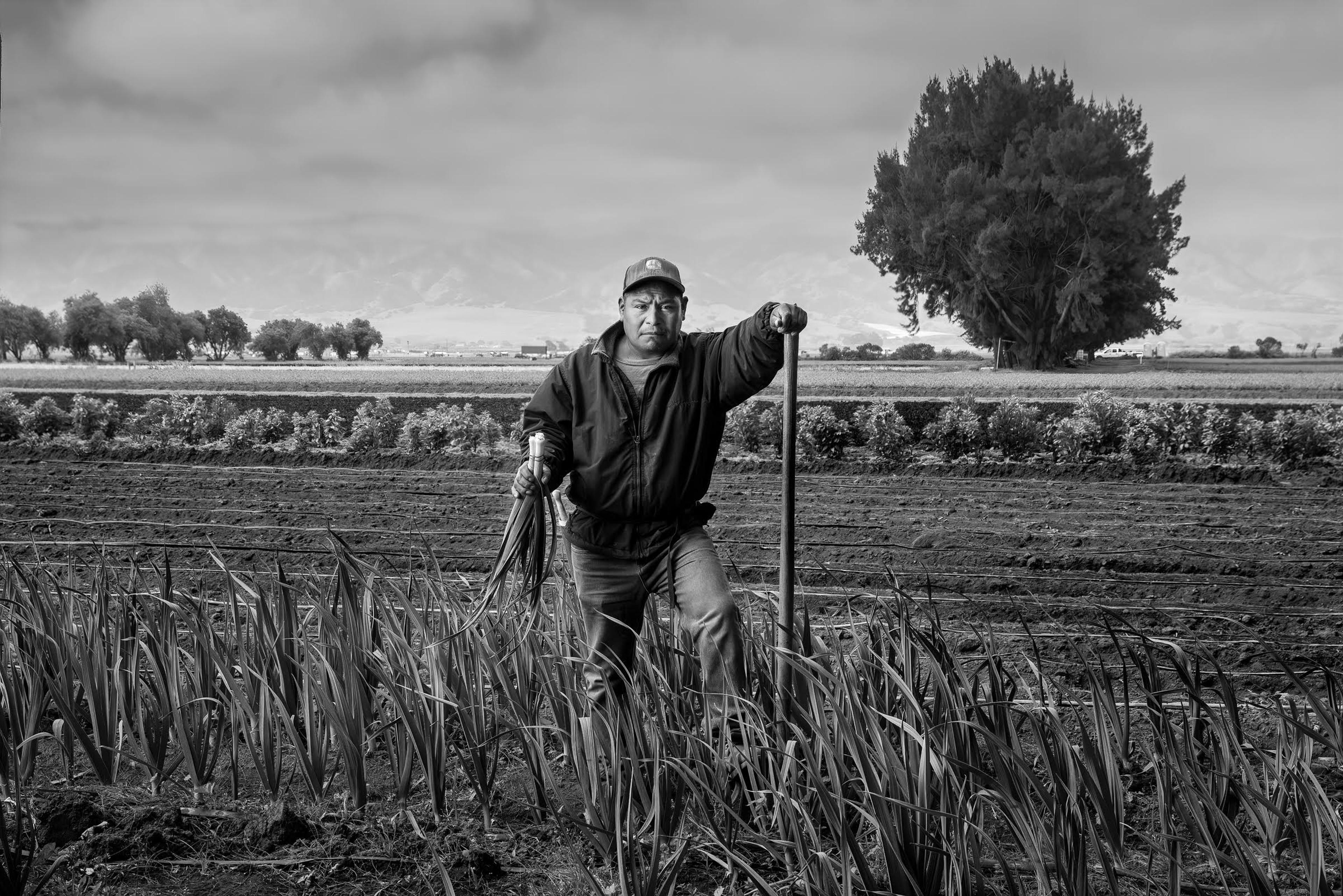Latino ag workers face significant structural barriers to eventual farm ownership. With the right support, that could change.
Whenever Delia Jovel places her hands in the soil at Tierra Fértil Coop, the worker-owned one-acre farm she founded three years ago in Henderson County, North Carolina, she feels connected to her late father, a farmer in their native El Salvador. “Farming, it’s a legacy,” she said.
Growing traditional food like tomatillos and cilantro is also a way for Jovel to literally root herself in her second homeland. “As an immigrant, it’s hard to be able to have that feeling of belonging,” she said. “I am not from this country, but at least this land I am working gives me permission to be part of it.”
As a co-owner of Tierra Fértil, Jovel is one of the 3.3% of all farm owners who identified as Hispanic (a reflection of language spoken, not country of origin) on the 2017 USDA Census of Agriculture. This low number is all the more striking considering that data from the 2019-20 U.S. Department of Labor National Agricultural Workers Survey (NAWS) estimated that Hispanics make up 78% of farm workers.
As white owners of small- and mid-scale farms in the U.S. retire — in 2017, the average age of farmers was 58 — the large number of foreign and U.S.-born Latino farm workers are well-positioned to become the next generation of U.S. farmers, researchers insist. “They know how to farm sustainably,” said Laura-Anne Minkoff-Zern, associate professor of food studies at Syracuse University and author of The New American Farmer: Immigration, Race, and the Struggle for Sustainability. “They have the knowledge that I think our food system needs.”
Yet linguistic, economic, legal, and cultural barriers can make it difficult for Latino farmers to access capital, purchase land, and break into markets. As organizations across the country work to overcome these challenges, these farmers are redefining who the traditional American farmer is and rejecting stereotypes that see them as workers, not owners.
As Jovel said, “Our community has been seen as labor, people who work for somebody else. And that’s the narrative that we want to change.”
A Farm of Their Own
Since 2003, the Latino Economic Development Center (LEDC) in St. Paul, Minnesota, has helped would-be farmers tackle what agricultural program director Aaron Blyth considers the three most significant, interrelated challenges facing them: access to capital, markets, and land. “It’s hard to do any one of those without the other,” he said.
Beginning farmers of all races and ethnicities wrestle with high land prices and difficulties acquiring loans. However, many Latino workers also lack documentation — 41 percent of all Latino farm workers between 2018-2020, according to NAWS estimates. Undocumented people can legally own businesses, Blyth said, but traditional institutions like banks usually consider them too high-risk to lend to.
In 2013, the LEDC became a Community Development Financial Institution, eligible for federal funds earmarked for low-income and underserved populations. When possible, the organization provides loans to undocumented farm owners. Unfortunately, a significant number of the grants that make up the center’s loan pool stipulate that the money has to go to official U.S. residents. When feasible, the LEDC encourages undocumented farmers to work with a legal silent partner, like a family member. He is hopeful that money from a recent $2.5 million grant from the Farm Service Agency will be more flexible in its lending capacity.


L-R: Guadalupe Quintero, Carlos Daniel de Jesus
·Photos by Mark Tuschman
As owner of a successful 46-acre farm in Turtle Lake, Wisconsin, and an agricultural trainer at LEDC, Rodrigo Cala sees his role as first and foremost helping would-be farmers change their mindset to see themselves as business owners. He talks to them about creating multi-year business plans, factoring in equipment costs, and even about owning land.
Cala, who grew up on a farm in San Andrés Mixquic outside of Mexico City, added that owning land doesn’t just improve a farm’s economic prospects. It also has a powerful impact on the farmer’s belief in — and passion for — their farming business. “As soon as they start owning the land, you can see the transformation,” Cala said. In the last five years, Blyth has noticed a significant increase in Latino farmers coming to the LEDC seeking assistance to buy land, having established their business enough to take that step.
In Salinas, California, where the Agriculture and Land Based Association (ALBA) has assisted limited-resource farmers since 2001, program director Nathan Harkleroad explained that few of these farmers can afford to purchase land outright; the group tends to focus on leasing opportunities. ALBA’s strength lies instead in the success of its five-year Farmer Education and Enterprise Development (FEED) program.
Over 95 percent of the approximately 75 students who enroll in FEED each year are Latino, and two-thirds are immigrants, Harkleroad estimates. After participants learn how to launch and operate an organic vegetable and strawberry farm in the yearlong farmer education course, they can lease land and equipment on ALBA’s 100-acre incubator farm at heavily subsidized rates. In a survey of course graduates for the organization’s 20-year anniversary impact report, 56 percent of Mexican immigrants and 37 percent of U.S-born Latinos reported owning their own farm. Sixty-nine percent of all Latino-owned farms in the survey also reported above $50,000 in sales — triple the rate reported by the 2017 agricultural census for all farmers nationally.
“We’re pretty happy with that success rate,” Harkleroad said.
Adapting to the Future
Both ALBA and the LEDC focus on helping farmers grow organic specialty crops, primarily because organic markets are more lucrative. Plus, many Latino immigrants are already familiar with organic principles like rotated crops and minimal pesticide use, having used them in their home countries out of necessity.
“Many people from other countries, they eat and grow organic food. But they don’t know that until they get here,” Cala said.
Cala has even gone beyond organic farming to embrace regenerative agriculture. After his brassica plants were decimated by excessive rain in 2020, he realized he needed to farm more resiliently. Since then, he has added chickens, hogs, and sheep onto his farm. They not only diversify his offerings but allow him to practice rotational grazing that improves the condition of the soil for the tomatoes, peppers, onions, and winter squash he grows.

Pictured: Isabel Rosas
·Photos by Mark Tuschman
“If you have the ability to set up those systems in your farm, I think you’re going to have more chances to succeed in the future,” he said. “Start yesterday, because everybody is late right now about climate change.”
This experiential knowledge of organic and resilient farming is an aspect of Latino farms and farm owners that Minkoff-Zern feels is often overlooked. “Immigrant farmers coming from small-scale farming in places like Mexico, they know how to farm sustainably. They don’t need to go to agroecology schools to figure this out,” she said.
However, Harkleroad and Blyth stress that these farmers may also know industrial farming due to their work experience here, and some want to incorporate those practices on their own farms. “They are just as diverse of a population as anyone else,” Blyth said.
Changing Perceptions
In addition to owning their own farms, former Latino farm workers are also branching out into other aspects of the agricultural industry.
At ALBA, even participants who do not finish the first year of the FEED program frequently increase their income, Harkleroad said. They may become supervisors or transition into quality control, food safety, or logistics. In addition, many second-generation participants whose parents started a farm in the U.S. participate in FEED as part of college coursework that prepares them to play a larger role in the family business.
Cala also encourages children of the farmers he works with to consider working in agricultural technology. “You can design apps, you can design programs, you can design greenhouses, you can design tractors,” he tells them. Plus, as multilingual speakers, he suggests they can work as translators or salespeople.
Leaving the fields and farms for office and laboratory jobs not only offers more job opportunities; it also changes perceptions about Latino farm workers in the U.S. Cala said this demographic is often praised for being hard workers, a stereotype that pigeonholes his community into being seen as employees — not employers or entrepreneurs. “We are hard workers, but then we have the skills to run businesses, too,” he said.
Meanwhile, the Tierra Fértil farm is looking for land. Currently, they lease their one-acre plot from a small farm that is itself on a lease, and they also lease space for a high tunnel and raised beds from an Episcopal church an inconvenient distance away. But Jovel refuses to let these challenges diminish her ambitions for the co-op. In her vision, Tierra Fértil is what she calls “an economic ecosystem” that would include a variety of diverse operations, including a certified kitchen and shop for value-added products, as well creating and selling compost. “Hispanic community members need to be recognized as people who provide a lot of wealth,” she said.
“For myself, and for my community, farming is a way to advocate for ourselves.”










